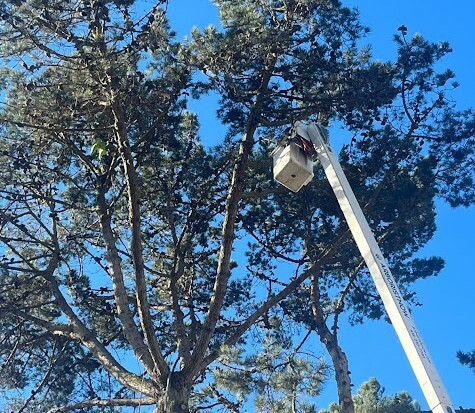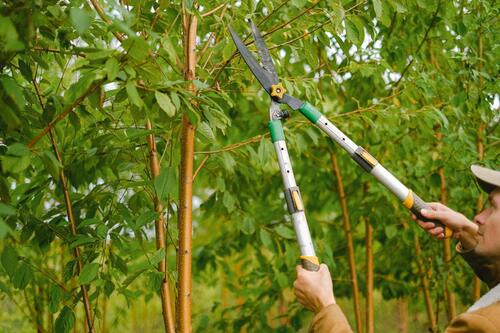Tree Health and Safety: The Crucial Role of Certified Arborists and Preventative Tree Pruning
Introduction
Trees are an essential part of our environment. They provide us with oxygen, shade, and peace of mind. However, just as any living being, trees require proper care to stay healthy and safe. This is where certified arborists come in. In this blog post, we will discuss why tree inspections from a certified arborist matter and the importance of preventative tree pruning for storm preparedness.
The Importance of Tree Inspections
Certified arborists are equipped with the expertise to conduct comprehensive tree inspections. These inspections are essential for detecting diseases and pests that may compromise tree health. They can also identify structural issues that could lead to instability. By identifying potential hazards beforehand, arborists play a crucial role in preventing safety hazards by ensuring timely intervention. As a tree owner, it is important to have your trees inspected regularly to maintain their health and ensure their safety.
Tree inspection is a meticulous and systematic process that requires a keen eye for detail and an in-depth understanding of arboriculture. Certified arborists, with their extensive training and expertise, are well equipped to handle this task.
How it Works
The process begins with a visual assessment of the tree’s overall appearance. Arborists look for any visible signs of distress, such as discoloration of leaves, premature leaf drop, or unusual growth patterns. These symptoms can indicate underlying health issues such as disease or pest infestation.
Next, arborists examine the tree’s trunk and branches closely. They check for signs of structural damage or decay, such as cracks, cavities, or loose bark. The presence of fungi or pests on the trunk or branches could also indicate a potential problem. Arborists also assess the tree’s growth habit and branch structure, looking for any signs of weakness or instability.
The inspection also involves a detailed assessment of the tree’s root system. While much of this is underground and out of sight, surface-level signs can hint at root health. Soil heaving, mushrooms growing at the base of the tree, or roots crossing over each other are all signs of potential issues.
In addition to these physical assessments, arborists may also consider external factors that could affect the tree’s health. This includes the tree’s environment, such as its exposure to sunlight and wind, the quality of the soil it’s planted in, and its access to water.
Upon completion of the inspection, the arborist compiles a detailed report outlining their findings. This report includes any identified issues, the severity of these issues, and recommended actions to address them.
In essence, tree inspections are a comprehensive process that goes beyond a simple visual check. It’s a scientific process that combines observation, knowledge, and technology to assess the health and safety of trees. Regular tree inspections by certified arborists are vital in maintaining the health and longevity of our trees, safeguarding our environment, and preserving the natural beauty of our landscapes.
Preventative Tree Pruning for Storm Preparedness

Arborist Now pruning a tree
Proactive tree pruning can make a significant difference in how well a tree withstands storm season . By enhancing tree structure and stability, it promotes proper weight distribution, reducing the risk of entire tree or major branch failure during storms. Establishing regular maintenance schedules for optimal results and safety is an important piece of the preemptive tree-pruning puzzle.
Arborists can recognize common issues during storms, such as broken branches that have yet to fall and signs of active uprooting . Proactive tree pruning can help prevent these scenarios before they happen. By preparing for potential hazards in advance, the risk of damage to property and injury to people can be greatly reduced.
The core objective of preventative tree pruning is to create a well-balanced tree with an open canopy. This allows wind to pass through the tree more easily, reducing the wind resistance and, consequently, the likelihood of damage during a storm. A well-pruned tree also has fewer weak branches that could potentially break off and cause damage during high winds.
Proactive Measures Ensure Safety
Regular maintenance schedules for tree pruning are a critical component of storm preparedness. Consistent and timely tree care ensures that issues are identified and addressed before they escalate into significant problems. It’s not just about removing dead or dying branches; arborists also identify branches that may be structurally unsound or poorly attached to the tree. These branches can pose a serious risk during storms as they are more likely to break off under stress.
Preventative tree pruning also involves eliminating any competing leaders. A tree with one main trunk is generally more resilient to storm damage than a tree with multiple leaders, which can split apart under the pressure of high winds . Removing these competing leaders strengthens the tree’s structure and improves its chances of surviving a storm.
Arborist Now knows that proactive tree pruning is a highly effective strategy for storm preparedness. It’s not just about preserving the health and aesthetics of trees; it’s also about ensuring the safety of our communities . The benefits of this proactive approach to tree care are immeasurable, contributing to safer and more resilient urban landscapes.
When is it Time to Prune Your Tree?

Pruning a Tree in the San Francisco Bay Area
There are telltale signs that indicate when it might be time to prune your tree. If you notice dead or dying branches, uneven canopy, excessive leaf drop, stunted growth, or pest activity, it’s time for an arborist to evaluate your tree’s health. Timing is also crucial. Pruning should be done during a tree’s dormant season to minimize the risk of harm to the tree. Proper pruning techniques are also essential. Certified arborists are trained in the best pruning practices for various tree species. A properly pruned tree will be healthier, safer, and more aesthetically pleasing overall.
Recognizing the signs for when it might be time to prune your tree is an essential aspect of proactive tree care. All of these symptoms suggest that your tree may benefit from pruning.
How to Spot Indicators of Danger
Dead or dying branches can be a sign of disease or pest infestation and pose a safety risk, as they can fall at any time. Pruning these branches helps prevent the spread of disease and reduces the risk of property damage or injury.
An uneven canopy could indicate problems with the tree’s structure. Overgrown or heavy branches on one side of the tree can make it unstable, increasing the risk of the tree toppling over in strong winds or storms. Pruning helps balance the weight distribution across the tree, enhancing its stability and structural integrity.
Excessive leaf drop or stunted growth can point toward health issues such as nutrient deficiencies, disease, or root problems. By pruning the tree, you can stimulate healthier growth and improve the tree’s overall vitality.
Signs of pest activity, such as the presence of insects or the formation of nests, can also warrant pruning. Timely removal of affected branches can help manage the pest infestation and protect the tree’s health.
Timing is a crucial factor when it comes to tree pruning. It’s generally recommended to prune trees during their dormant season, typically in late winter or early spring. This minimizes stress on the tree and reduces the risk of disease transmission. However, the timing can vary depending on the tree species and specific health concerns, so it’s always best to consult with a certified arborist .
Certified arborists are trained in the best pruning practices for various tree species. They understand how to make precise cuts that minimize damage to the tree and promote healing. They also know which branches to remove to enhance the tree’s structure, health, and appearance.
A properly pruned tree is not just healthier and safer, but also more aesthetically pleasing. Pruning can improve a tree’s shape and symmetry, increase light penetration for undergrowth, and showcase the tree’s natural beauty. It’s an investment in the tree’s future, promoting its longevity and enhancing its contribution to the landscape.
We’ll help you recognize when it’s time to prune your tree. Acting accordingly is critical for maintaining the health, safety, and aesthetics of your trees. Utilizing a certified arborist like Arborist Now, you can ensure that your trees receive the best care possible, preserving their beauty and value for years to come.
Conclusion

Small-scale Tree Pruning – Photo by Anna Shvets
Proper tree care requires specialized expertise and a proactive, preventative approach. By partnering with a certified arborist to conduct regular tree inspections and strategic pruning, you can maintain the health, safety, and natural beauty of your trees. Keep an eye out for signs like dead branches, pest activity, and uneven growth as indicators that it’s time to prune. Investing in preventative tree care pays dividends through enhanced tree stability, longevity, and aesthetics while reducing safety risks to your property. The peace of mind that comes from healthy, hazard-free trees in your landscape is well worth the effort.
The professionals at Arborist Now are dedicated to keeping your trees healthy and minimizing safety hazards to you and your family.
Contact us today
for a consultation about your property’s needs!


